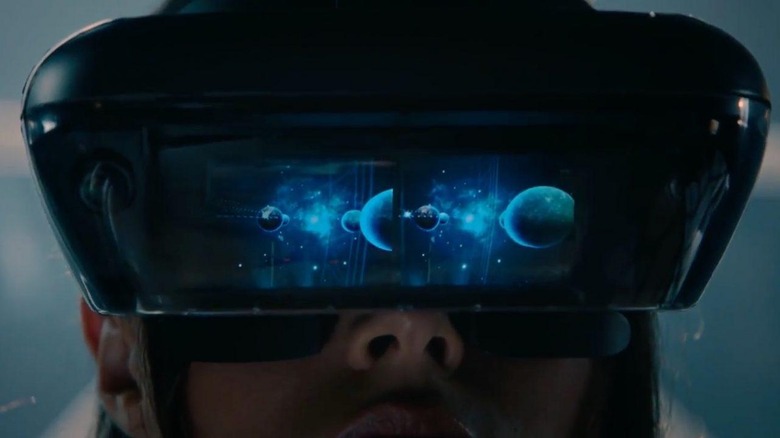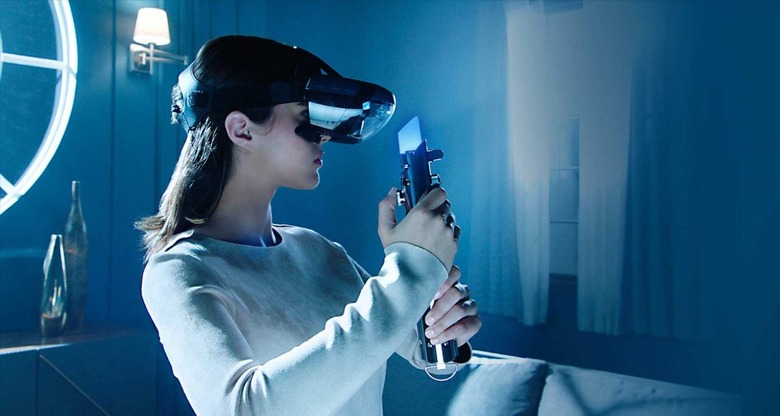Star Wars: Jedi Challenges Puts An AR Lightsaber In Your Hands
Disney has teased what Star Wars fans have long been demanding: an augmented reality game that allows you to wield your own lightsaber. Previewed at D23, Disney's annual expo, Star Wars: Jedi Challenges combines an AR headset with a smartphone app and a number of games. While details are in short supply right now, there are already several hints at just what the system could do.
The headset is made by Lenovo, and looks like a riff on what we've seen before with Microsoft's HoloLens. Two transparent displays are visible through the front visor, overlaying computer graphics onto the real world. Unlike a VR headset – such as the Windows Holographic headset Lenovo announced earlier this year – this transparent fascia means real and virtual elements can be combined.

Where HoloLens is a completely self-sufficient system, however, combining both the AR displays and a computer that's worn on the head, Jedi Challenges will offload its processing demands. That'll be taken on by your smartphone, where different Star Wars themed apps and games will run.
The most exciting is likely to be the ability to grab your own lightsaber. While exactly what you'll do with that is unclear at this point, the Jedi Challenges teaser at least confirms that it'll be one of the possibilities. That might mean battling computer-generated Stormtroopers around your own living room, for instance, using the furniture as physical barriers in a virtual arena.
Disney did demo a few other possibilities, mind. The famous holochess game, for instance, where physical pieces are replaced by tiny virtual monsters that fight it out on a circular board, was briefly shown. In another game, Jedi battled against an augmented reality AT-AT.
The specifics will have to wait a little longer, unfortunately. Disney says that full details will be confirmed over the coming months, but there's no public release date at this point, along with no suggestion on how much the system might cost. Relying on a smartphone to do the processing certainly makes sense to keep the costs down – along with weight and complexity – but just how good the transparent displays Lenovo is using will be remain to be seen.

Our big question there is just how large the Jedi Challenges field of view will be. The lingering complaint about HoloLens, for instance, is that while its transparent screens are great when you're looking directly ahead, they don't extend especially far into the wearer's peripheral vision. That means virtual objects don't really fill the real-world scene as a whole.
If Lenovo and Disney have addressed that in a meaningful way, it could make this the AR headset to have.
MORE Jedi Challenges
